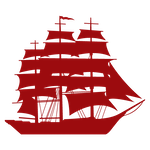Wool is very popular in the clothing and furniture industry. And with good reason: it’s a natural, renewable and biodegradable material with fantastic properties!
As well as being warm and comfortable, it has numerous benefits for general health and well-being.
Wool is odour-resistant
Wool’s unique properties enable it to absorb up to 30% of its own weight without feeling damp, and to help evaporation. By absorbing perspiration from the skin, wool garments reduce the proliferation of bacteria responsible for unpleasant odours.
Wool garments can therefore be worn for longer between washes unlike synthetic materials.
Wool provides a natural thermal barrier
Wool contains around 80% of its weight in air, which slows the passage of air during temperature variations. It has a much greater thermoregulatory capacity than other fibres, enabling it to maintain a constant body temperature by insulating against cold and heat.
As we saw earlier, wool’s ability to absorb moisture combined with its breathability means that wool textiles can maintain an ideal microclimate close to the skin during physical activity, summer and winter alike.

Wool improves eczema symptoms
When worn next to the skin, super fine merino wool acts as a dynamic buffer, helping to stabilise moisture levels and the temperature creating an ideal microclimate between the textile and the skin.
Three dermatological trials, all published in leading journals, showed that infants, teenagers and adults with eczema experienced a reduction in symptoms when wearing superfine merino wool next to the skin. Since areas of the skin affected by atopic dermatitis lose their ability to regulate moisture, wool is an ideal material for people with eczema or sensitive skin.

Wool improves indoor air quality
Our homes are polluted by VOCs (Volatile Organic Compounds), which are classed as allergenic and carcinogenic. These VOCs, found in particleboard furniture, paints, glues and certain synthetic carpets, can cause health problems such as headaches, nausea and serious respiratory problems.
Studies have shown that common VOCs present in the indoor environment can be absorbed and chemically bound to wool fibres, improving indoor air quality. Wool used in interior textiles such as carpets, rugs, curtains and other furnishing fabrics is therefore a simple and sustainable solution for healthier indoor air.
Thanks to its unique natural properties, wool has many benefits for our health and well-being. Breathable and thermoregulating, it is ideal for clothing and interior decoration. Natural, renewable, biodegradable and containing no microplastics, it also meets the many environmental challenges we face.
If you have a wool product project in mind, contact us and we’ll help you find the ideal wool to meet your specifications.




